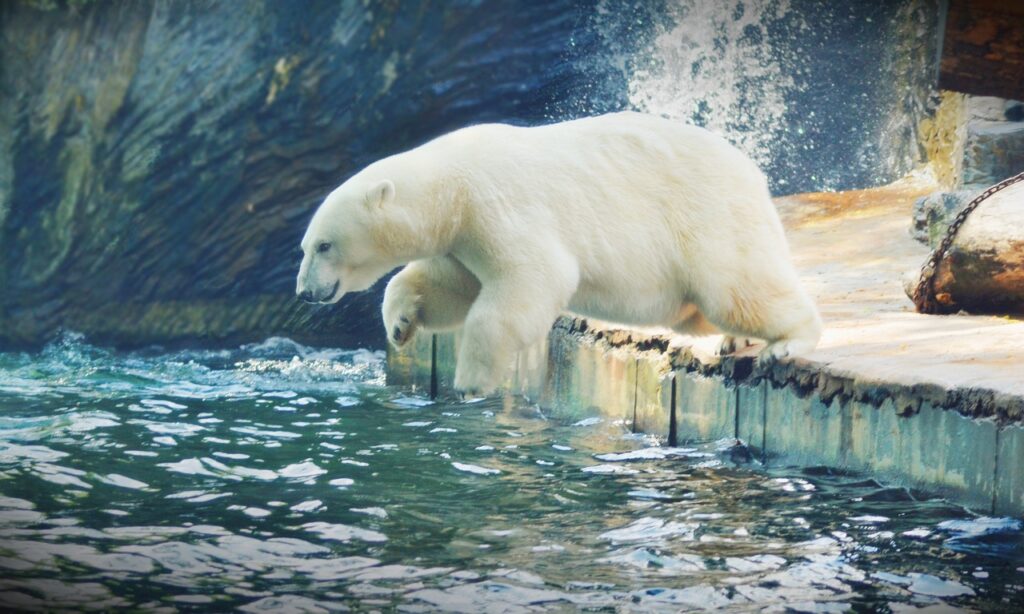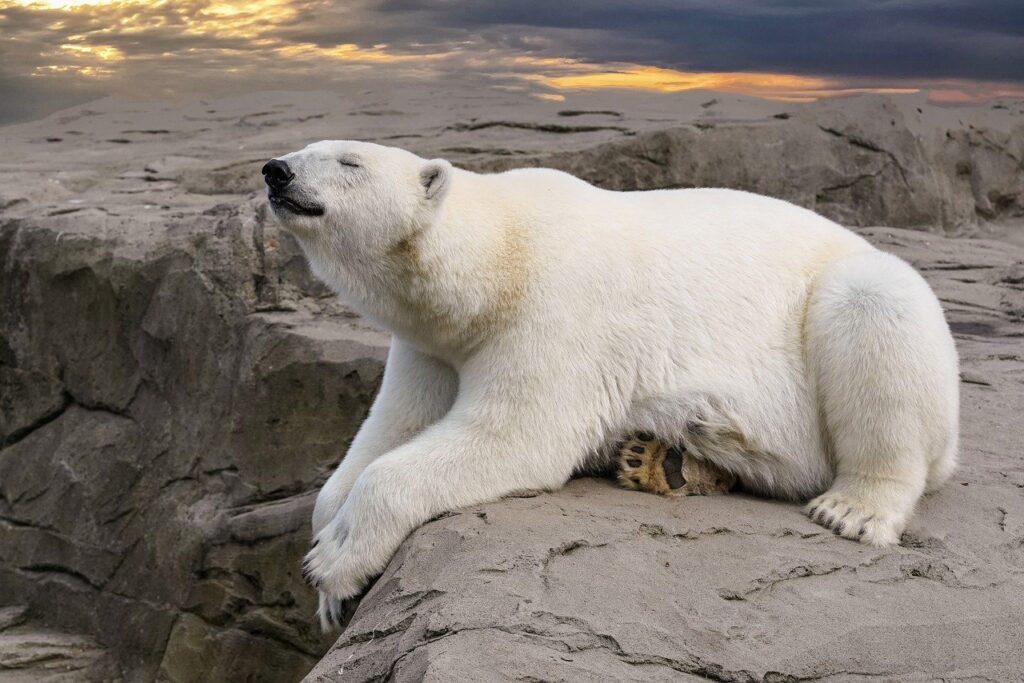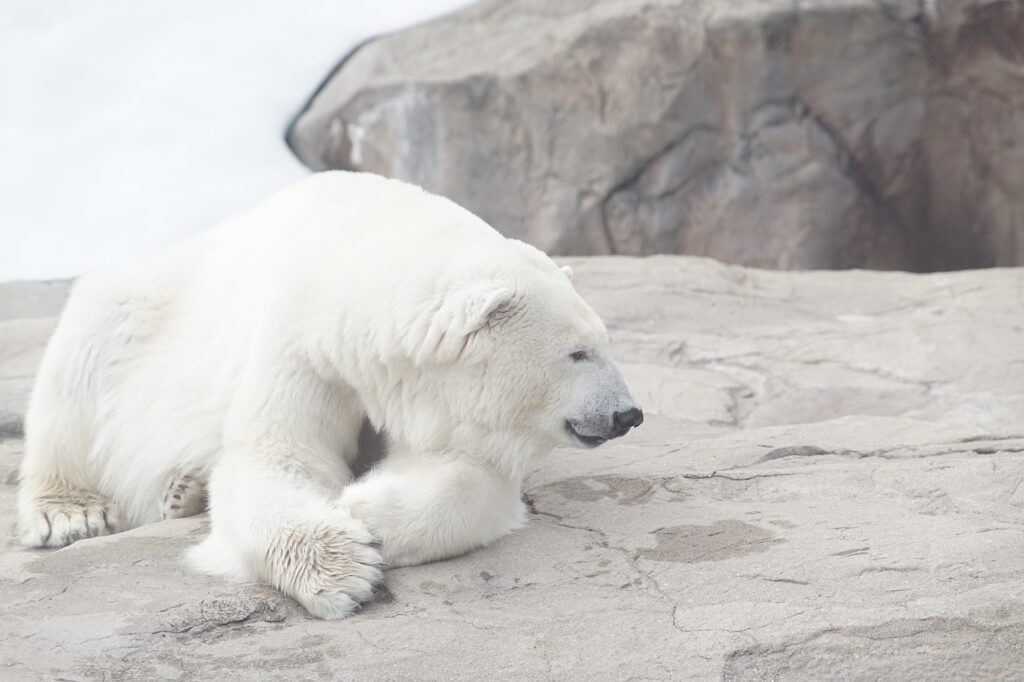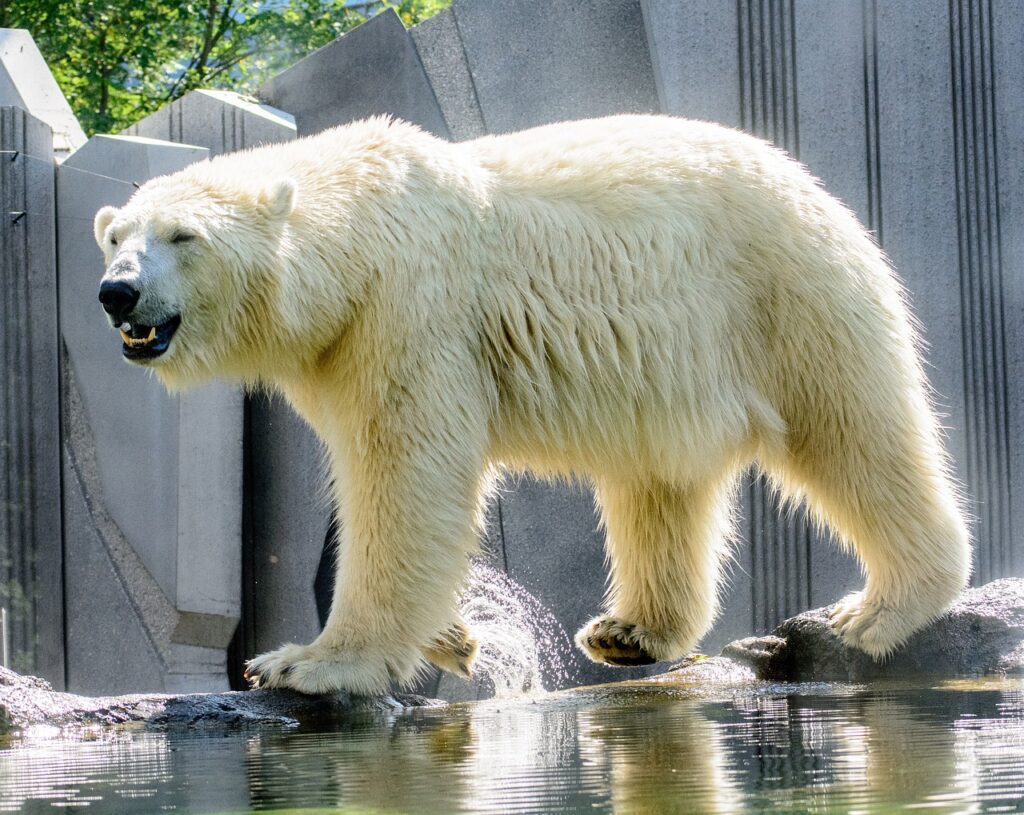Discover the largest polar bear ever recorded and learn what makes these majestic creatures so powerful. Explore their size, survival, and conservation efforts!
When you think of the Arctic, the first animal that probably comes to mind is the polar bear. These magnificent creatures are symbols of the frozen wilderness, known for their sheer strength, beauty, and resilience. But have you ever wondered which polar bear holds the crown as the largest? Let’s dive into the world of polar bears and explore what makes the largest of them truly extraordinary.
The Magnificence of Polar Bears
Before we get into the specifics of the largest polar bear, it’s essential to understand the general characteristics of these remarkable creatures. Polar bears (Ursus maritimus) are the largest land carnivores in the world, and they are uniquely adapted to survive in one of the harshest environments on Earth. Their thick white fur and a layer of fat beneath the skin help insulate them from the freezing temperatures. They have powerful limbs and large paws that act like snowshoes, allowing them to walk on ice and swim long distances across the Arctic waters.
Polar bears are apex predators in their environment, primarily feeding on seals, particularly ringed and bearded seals. They hunt by waiting near breathing holes in the ice or by stalking their prey on land. Despite their reputation as fierce hunters, polar bears are vulnerable to climate change, which affects their habitat and food sources.
The Largest Polar Bear on Record
The largest polar bear ever recorded was a behemoth that weighed in at a staggering 2,209 pounds (1,001 kilograms). This massive bear was shot in 1960 near Kotzebue Sound, Alaska, and its size remains unmatched. Measuring over 12 feet (3.7 meters) long from nose to tail, this polar bear was truly a giant.
While it’s rare to find polar bears of this size today, they can still grow impressively large. Adult male polar bears typically weigh between 900 to 1,600 pounds (410 to 720 kilograms), while females are much smaller, usually weighing between 400 and 700 pounds (180 to 320 kilograms).

Why Are Some Polar Bears Larger Than Others?
So, what factors contribute to a polar bear’s size? There are several key elements that determine how big these incredible animals can get.
- Genetics: Just like with humans, genetics plays a big role in the size of polar bears. Some are simply born to be bigger.
- Diet: The amount and quality of food available to a polar bear can significantly impact its growth. A steady diet of high-fat foods, particularly seals, can lead to greater size. In years when seal populations are plentiful, polar bears are likely to grow larger and stronger.
- Age and Health: Older polar bears, particularly males, tend to be larger due to years of accumulating mass. However, as they age, their health can deteriorate, leading to a decrease in size and strength.
- Climate Conditions: A changing climate impacts the availability of food and the ability of polar bears to hunt. Bears that struggle to find food may not reach their full size potential.
The Biggest Polar Bear: A True Survivor
The largest polar bears, like the record-holder from 1960, are extraordinary survivors in a brutal environment. These bears have likely spent much of their lives in the wild, constantly adapting to the ever-changing Arctic conditions. They would have been able to efficiently hunt and swim across vast expanses of ice and open water, all while evading other predators and humans.
But how did this particular polar bear grow so large? It’s possible that this individual had access to a consistent food source over several years, contributing to its enormous size. As we know, polar bears can spend a lot of time without eating when food is scarce, which can stunt their growth. But in the case of the largest polar bear, it’s likely that the bear had access to prime hunting grounds and a healthy population of seals.

How Do Polar Bears Compare to Other Bears?
While polar bears are the largest bear species, they’re not the only ones worth talking about. Let’s take a quick look at how they compare to other well-known bear species in terms of size.
Grizzly Bears
Grizzly bears (Ursus arctos horribilis) are the second-largest bear species. Males can weigh anywhere between 600 to 1,500 pounds (270 to 680 kilograms) and can grow up to 9 feet (2.7 meters) in length. They are slightly smaller than polar bears on average, but when it comes to sheer muscle mass, grizzlies are often more robust.
Kodiak Bears
Kodiak bears (Ursus arctos middendorffi) are a subspecies of brown bears that live on the Kodiak Archipelago in Alaska. These bears are considered one of the largest land carnivores, with some individuals reaching over 1,500 pounds (680 kilograms). Like grizzly bears, they can rival polar bears in size, but polar bears still hold the title for the heaviest.
Black Bears
Black bears (Ursus americanus) are the smallest of the North American bears. They weigh between 100 to 600 pounds (45 to 270 kilograms) and can grow up to 8 feet (2.4 meters) long. While they may not be as massive as polar bears, they are still highly adaptable and capable hunters in their own right.
Where Can You Find the Largest Polar Bears?
Polar bears are found throughout the Arctic region, primarily in areas of Alaska, Canada, Greenland, Russia, and Norway. They thrive in icy environments, where they can hunt for seals and other marine animals. While the largest polar bears are typically found in the northernmost regions, some of the biggest individuals have been spotted in the coasts of Alaska, Canada, and Russia.
Interestingly, polar bears are increasingly being found further south than they were in the past, likely due to climate change and the shrinking of their ice habitat. As the Arctic warms, polar bears are forced to travel greater distances to find food, which can impact their health and size.
Polar Bear Conservation: Why Size Isn’t Everything
While the size of a polar bear is an awe-inspiring feat of nature, it’s important to remember that these animals face numerous threats, and their survival is increasingly uncertain. Climate change, hunting, and habitat loss are all significant challenges for polar bears, and they are listed as a vulnerable species by the International Union for Conservation of Nature (IUCN).
The loss of sea ice due to global warming is perhaps the greatest threat to polar bears. These animals rely on the ice to hunt for seals, but as the ice melts earlier in the spring and forms later in the fall, they have less time to find food. This results in many bears becoming malnourished, and some may not even survive to adulthood.
Conservation efforts are crucial to ensuring that polar bears continue to thrive in the wild. Organizations like the World Wildlife Fund (WWF) and the Polar Bear International group are working hard to protect polar bear populations by addressing climate change, limiting hunting, and preserving their habitats.
How You Can Help Polar Bears
If you’re wondering how you can make a difference, there are several ways to help. You can:
- Support organizations dedicated to polar bear conservation.
- Reduce your carbon footprint to help combat climate change.
- Educate others about the plight of polar bears and the importance of preserving their habitat.
While we may never see another polar bear as large as the record-holder from 1960, we can work together to ensure that future generations will have the chance to witness these majestic creatures in the wild.

Conclusion: The Power of the Polar Bear
The largest polar bear on record was an incredible specimen, showcasing the raw power and beauty of these magnificent creatures. While we may never encounter a bear of this size again, it’s essential to recognize that the size of a polar bear is not the only measure of its greatness. These animals are resilient, intelligent, and incredibly adapted to survive in one of the harshest environments on Earth.
As we continue to face the challenges of climate change, it’s more important than ever to protect polar bears and their habitats. Whether you’re in awe of their size, their strength, or their sheer survival instincts, one thing is clear: polar bears deserve our respect and our efforts to protect them.
So, the next time you think of the Arctic, remember the polar bear, the majestic king of the ice. Let’s do our part to ensure that these magnificent creatures continue to roam the Arctic for generations to come.
Bring home the cuddly magic of the Arctic with this adorable Mom & Baby Polar Bear plush! Perfect gift for kids – Click to make their dreams come true!
